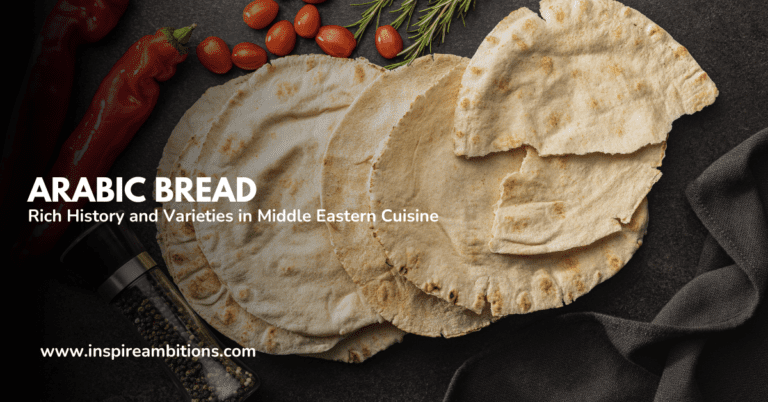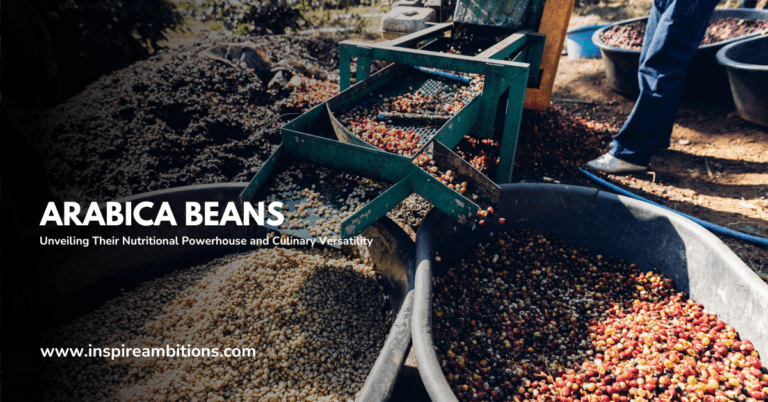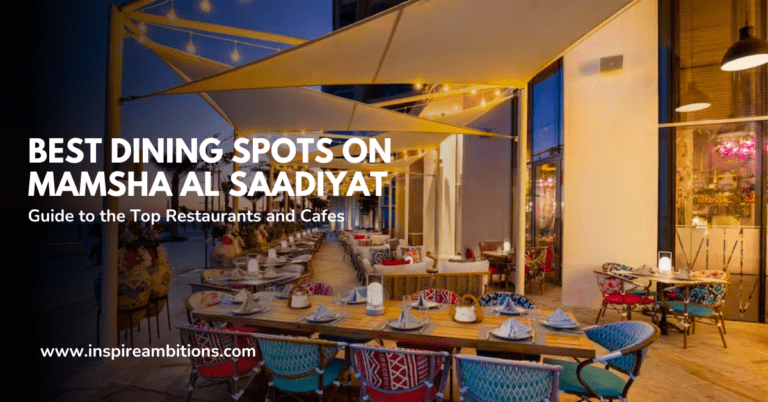阿拉伯晚餐——传统中东美食综合指南
Diving into the world of Arabic cuisine can be a delightful experience, with a myriad of dishes that appeal to diverse palates. The rich culinary heritage is characterised by spices, grains, and fresh ingredients, making it an exceptional choice for dinner. From the vibrant Levantine dishes to the hearty meals of Saudi Arabia, these flavoursome meals will certainly tantalise your tastebuds.
As you explore the Arabic dinner scene, you are bound to come across an array of mouthwatering options. Delight in dishes like Syrian Fattet Djaj, a layered chicken platter, or Lebanese Fattoush, which is a delicious bread salad with mixed greens and aromatic pomegranate. Hearty rice dishes such as Kabsa, packed with lentils, meat, and an assortment of vegetables, will surely leave you wanting more.
Whether you consider yourself a culinary adventurer or simply enjoy trying new meals, Arabic dinners offer a unique enchantment to your dining experiences. Allow yourself to be swept away by the aromas, flavours, and textures of these traditional dishes, and relish in the history and culture that accompanies them.
Origin of Arabic Cuisine
Arabic cuisine has a rich and diverse history, with its origins dating back to ancient civilizations that spanned across the Middle East. As you delve into this fascinating culinary journey, you’ll discover that the Sumerians, Babylonians, Phoenicians, Hittites, Arameans, Egyptians, and Nabateans all contributed to the formation of the Arab kitchen.
Over the centuries, the cuisine has evolved and been influenced by various regional cuisines, such as the Maghreb in the west and the Mashreq in the east. The result is a unique blend of flavours and textures that showcases the best of Arabic culture and its ancient trading routes.
During the early days, ingredients, spices, and herbs were traded between regions, and this exchange of goods played a vital role in shaping the Arab culinary landscape. Each region brought its unique offerings, which were then incorporated into the cuisine as a whole, making it a delightful melting pot of tastes.
In addition to regional influences, Arabic cuisine has also absorbed elements from Persian, Indian, Lebanese, and Chinese cooking styles. This can be observed in certain dishes and techniques, as well as the use of specific ingredients from these culinary traditions.
正如你 explore Arabic cuisine, you will find staple ingredients like rice, which is common in the Mashreq region, and couscous, which is prevalent in the Maghreb. Other key ingredients include dates, figs, olives, various fruits and vegetables, and an assortment of aromatic spices such as cumin, cinnamon, and saffron.
这 Arab world’s rich history of trading and cultural exchange has undoubtedly shaped its cuisine over time, making it a unique and enticing culinary experience. Enjoy your journey through the flavours of Arabic cuisine, and let your taste buds discover the intricate blend of flavours that define this captivating culinary tradition.
Essential Ingredients in Arabic Dinner
In preparing an authentic Arabic dinner, you’ll need to have some essential ingredients on hand to get the flavours just right. This section focuses on the key ingredients that are commonly used in traditional Arabic dishes.
First and foremost, chickpeas play an essential role in many Arabic recipes. You might recognise them as the base for the popular dish hummus, where they are blended with other ingredients like tahini, garlic, lemon juice, and olive oil. Chickpeas are a versatile ingredient that can be used in a variety of dishes, providing a hearty base for your meal.
米 is another staple in Arabic cuisine and is used in various recipes, including Kabsa, a traditional rice dish combined with meat, lentils, fish, or lamb, and a mix of vegetables and spices. Having rice on hand will ensure you can create iconic dishes that transport you straight to the heart of Arabian culture.
Among the spices you’ll need to have are zaatar – a spice mix made with dried oregano, sesame seeds, sumac, salt and ground caraway seeds – and 漆树, a tangy spice derived from the berries of the sumac shrub. Together, they provide the aromatic and flavourful qualities that make Arabic food truly stand out. Keep a stash of these spices handy so you can whip up a genuine meal anytime.
Another important component of an Arabic dinner is the flatbread 或者 khobz arabi. This versatile bread is enjoyed alongside various dishes, either to create wraps with fillings or simply to scoop up delicious dips and spreads. Experiment with both plain and flavoured flatbreads, incorporating zaatar and olive oil for additional taste and texture.
Lastly, don’t forget the 蔬菜. A chargrilled vegetable platter, also known as “antipasto”, is an essential Arabic side dish. To make it, simply grill your preferred selection of vegetables with just some salt, pepper, and olive oil. Serve this colourful platter drizzled in olive oil and accompanied by a yoghurt sauce, adding a tempting variety of flavours and textures to your Arabic dinner experience.
By stocking up on these essential ingredients and keeping an eye out for even more delightful additions, you’ll quickly become a pro at creating authentic Arabic dinners that will impress family and friends alike.
Popular Arabic Dinner Dishes
In this section, you’ll find information about some popular Arabic dinner dishes that are sure to delight your taste buds. We’ll cover Kabsa, Mansaf, Mandi, and Tabbouleh.
卡布萨
Kabsa is a traditional Arabian recipe that originates from Saudi Arabia. This dish consists of rice, meat (lamb, chicken, or fish), and a blend of flavoursome spices. Lentils and vegetables are often added to the mix, making Kabsa a wholesome and tasty dinner option. The dish is quite versatile and can be prepared in various ways, making it a crowd-pleaser among locals and foreigners alike.
曼萨夫
Mansaf is a traditional Jordanian dish known for its unique flavour and presentation. The dish is made with tender pieces of lamb cooked in a sauce called Jameed, which is a dried, fermented yoghurt. Mansaf is traditionally served over a bed of rice and garnished with toasted almonds, pine nuts, and herbs. When enjoying this dish, you’ll experience a delicious combination of tangy and savoury flavours that truly define Mansaf as a Jordanian delicacy.
Mandi
Mandi hails from the region of Yemen and has become a popular dish across the Arabian Peninsula. This dish features fragrant Basmati rice that’s slow-cooked with meat (usually chicken or lamb) and a blend of spices such as saffron, cloves, and cardamom.
The meat is cooked in an underground pit to achieve its tender, succulent texture. Mandi is typically served with yoghurt sauce, salad, and a side of spicy salsa called Zhug, offering a balance of flavours and textures.
塔博勒色拉
Tabbouleh is a fresh and vibrant salad that comes from the Levantine region which includes countries like Lebanon and Syria. It is made with finely chopped parsley, tomatoes, onions, and mint, and tossed with bulgur wheat and a simple dressing of olive oil and lemon juice.
With its light and zesty flavour profile, Tabbouleh is an ideal accompaniment to grilled meats and other hearty Arabic dishes. It’s also a fantastic option for a healthy and refreshing side dish.
Enjoy exploring these delicious Arabic dinner dishes and be sure to try them when you have an opportunity to do so. The unique flavours and preparations will broaden your culinary horizons.
Traditional Arabic Dinner Customs
款待
Arab culture is renowned for its warmth and generous hospitality. When attending a traditional Arabic dinner, you can expect a sincere welcome from your hosts. It is customary to bring a gift for the host, such as chocolates or a dessert. Be prepared to be offered an array of delectable dishes representing the rich culinary heritage of the Arab world.
Serving and Eating Etiquette
Seating Arrangements
Traditional Arabic dinners may have guests seated on cushions on the floor around a low table. In more modern settings, dinner may be served at a dining table. It is important to respect the seating arrangements made by your host.
Hand Washing
Before the meal begins, you may be offered water and a towel to wash your hands. It is polite to accept this gesture and cleanse your hands before eating.
Communal Plates
Arabic meals are often served on large communal plates, with guests sharing dishes. Be mindful to use the proper utensils provided, or if eating with your hands, use your right hand as the left hand is considered unclean.
饮食
Be cautious with your choice of meat. Lamb is a common and safe option, while pork and non-halal meats are not served according to Islamic dietary rules. Alcohol is also not typically served. Accept offerings of food or drink graciously, as refusing may be considered impolite.
Eating Pace
During the meal, it is respectful to pace yourself with the speed of your host and fellow guests. Overeating can be seen as disrespectful, so be mindful of your portions.
Remember, the key to enjoying a traditional Arabic dinner is to appreciate the warmth of their 款待 while adhering to the customs and etiquette outlined above.
Tips for Preparing an Authentic Arabic Dinner
To create an unforgettable Arabic dinner, you need to focus on showcasing the rich flavours and spices of traditional Arabian cuisine. Here are some tips to help you prepare a delicious and authentic Arabic feast.
In Arabian cuisine, meze or small plates play a significant role. Include a variety of options like herb labneh, smoked aubergine, falafel and spiced kebabs to offer a mixture of tastes and textures. Make sure you also include rice dishes like Kabsa, which is prepared with meat, lentils, fish, lamb, and spices.
2. Use fresh vegetables and herbs:
A key element of Middle Eastern food is the incorporation of fresh herbs and vegetables. In dishes like tabbouleh, fresh parsley, tomatoes, cucumbers, and onions add bright flavours and pleasant textures. Use the freshest produce available to ensure a delightful taste experience.
3. Incorporate wholesome grains and legumes:
Middle Eastern meals emphasise the use of grains like bulgur and couscous, as well as legumes such as chickpeas and lentils. These ingredients form the basis or accompaniment to many dishes. For example, lentils are used in Shorbat Adas, a traditional Lebanese soup, and chickpeas are essential for making hummus and falafel.
4. Don’t forget the spices:
The soul of Arabic food comes from its aromatic spices. Be sure to use a mix of spices like cinnamon, cumin, nutmeg, and cardamom in recipes like Kabsa. When preparing dips like zaatar, incorporate a variety of herbs like thyme, oregano and sumac to deliver that 正宗的味道.
5. Grill meats and vegetables:
For a truly Arabic experience, char-grill meats and vegetables capture an authentic taste. A chargrilled vegetable platter, prepared with salt, pepper and olive oil, is a fantastic addition to your table. Likewise, succulent grilled meats like lamb and chicken are a must.
6. Prepare ahead of time:
Some dishes, hummus and baba ganoush, taste better when made in advance giving the flavours more time to mix. Planning your menu and preparing dishes beforehand can help ensure that your Arabic dinner is a stress-free, enjoyable experience.
With these tips in hand, your Arabic dinner is sure to be an impressive and delicious affair. Enjoy the process of preparing such a culturally rich meal, and relish the satisfaction that comes from sharing these traditional flavours with friends and family.
Arabic Dinner – Conclusion
In your exploration of Arabic dinner, you have delved into the rich and diverse culture that lies behind the delicious dishes and customs. The cuisine is a blend of various regional influences, from the Maghreb to the Fertile Crescent and the Arabian Peninsula. Essential ingredients, such as bread, dairy, meat, fruits, grains, pulses, olive oil, and spices, offer an array of textures and flavours for you to enjoy.
Arabic dinners offer you a chance to experience vibrant dishes like Fattoush, a Levantine bread salad comprising mixed greens, fried Arabic bread for crunchiness, and often pomegranate. In attending an Arabic dinner, remember to be mindful of the cultural beliefs and practices surrounding the choice of food and drink. For instance, opt for lamb as a safe choice and refrain from consuming pork, non-halal meat, and alcohol.
As you appreciate the Arabic food culture, you’ll discover that dinner is the high point of the night, allowing for enjoyable conversations and company. Respecting guests’ time and not overstaying your welcome is essential. Embracing the offered food and drink showcases your appreciation of Arab hospitality.
Delving deeper into Arabic dinner culture, you are sure to unearth countless culinary treasures and rich traditions that will heighten your dining experience, ultimately leaving you with a profound appreciation for this intricate, flavourful cuisine.







